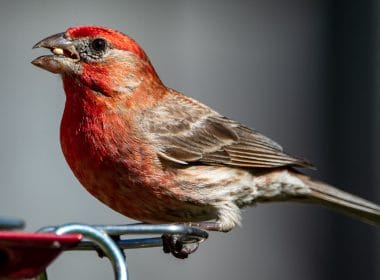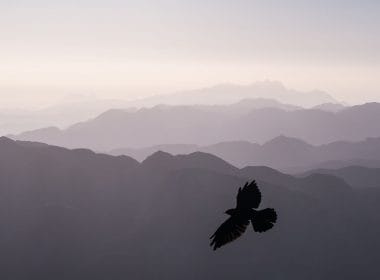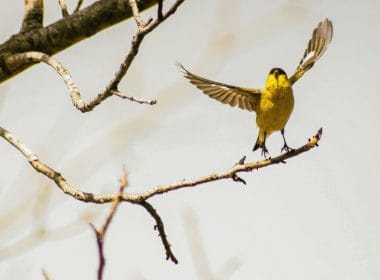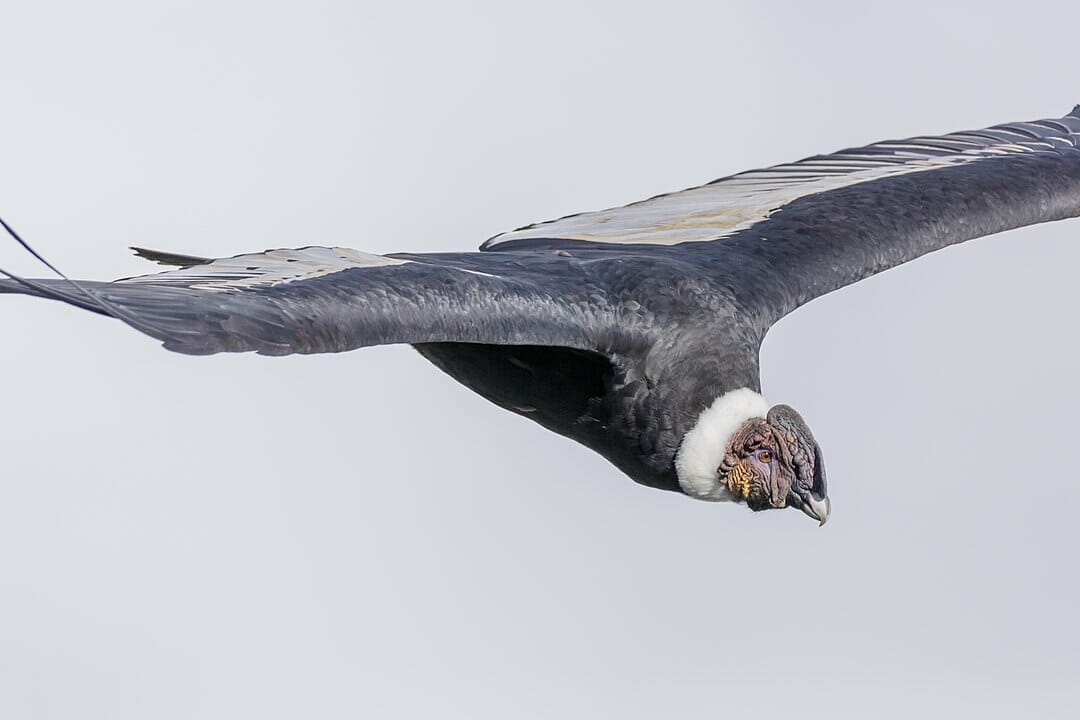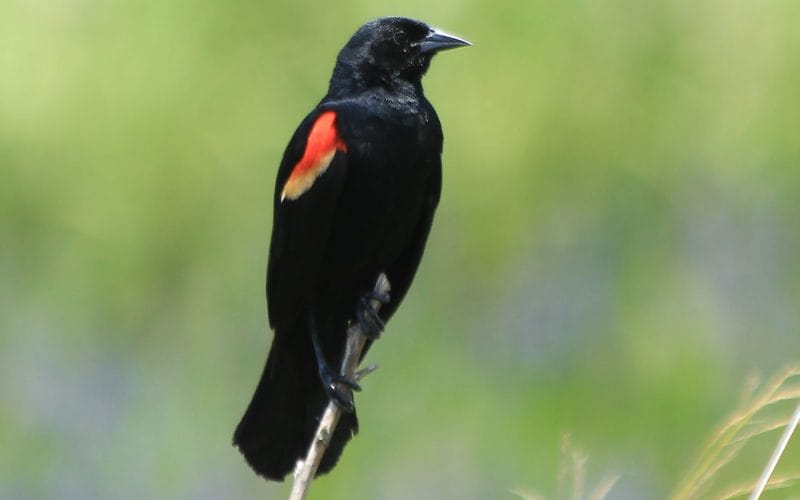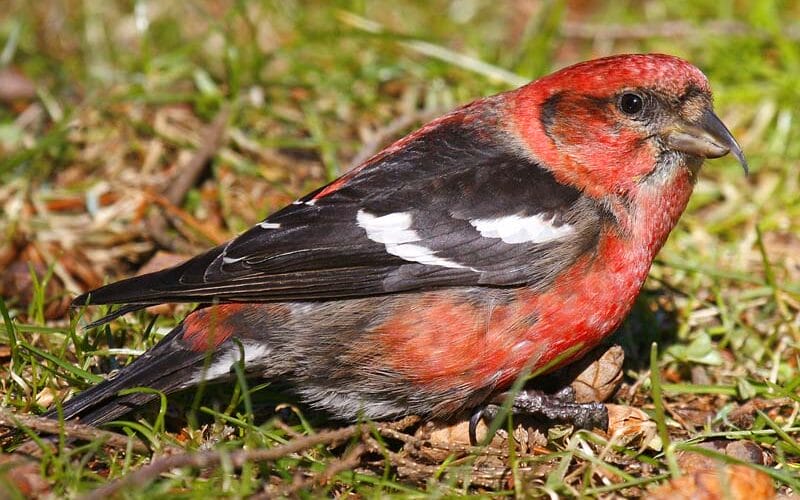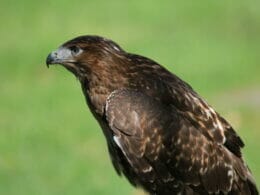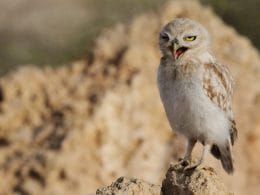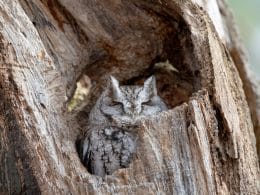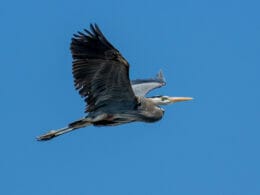Birds of prey or raptors, as they are also known are apex birds, top of the heap and a rival to many 2 or 4 legged animals. In this post we look at some of the most dangerous species on the planet and ask if they are a real danger to humans.
Great Horned Owl (Bubo virginianus)
Identification
This is the largest owl in the United States and has gray and red morphs. It is so named for the large tufts above its ears which resemble horns from a distance. Its plumage is typical of owls with patterns that camouflage it easily.

Range
The Great Horned Owl is predominately found across the U.S. but also into Canada, through Central America and far south into South America. It is not migratory.
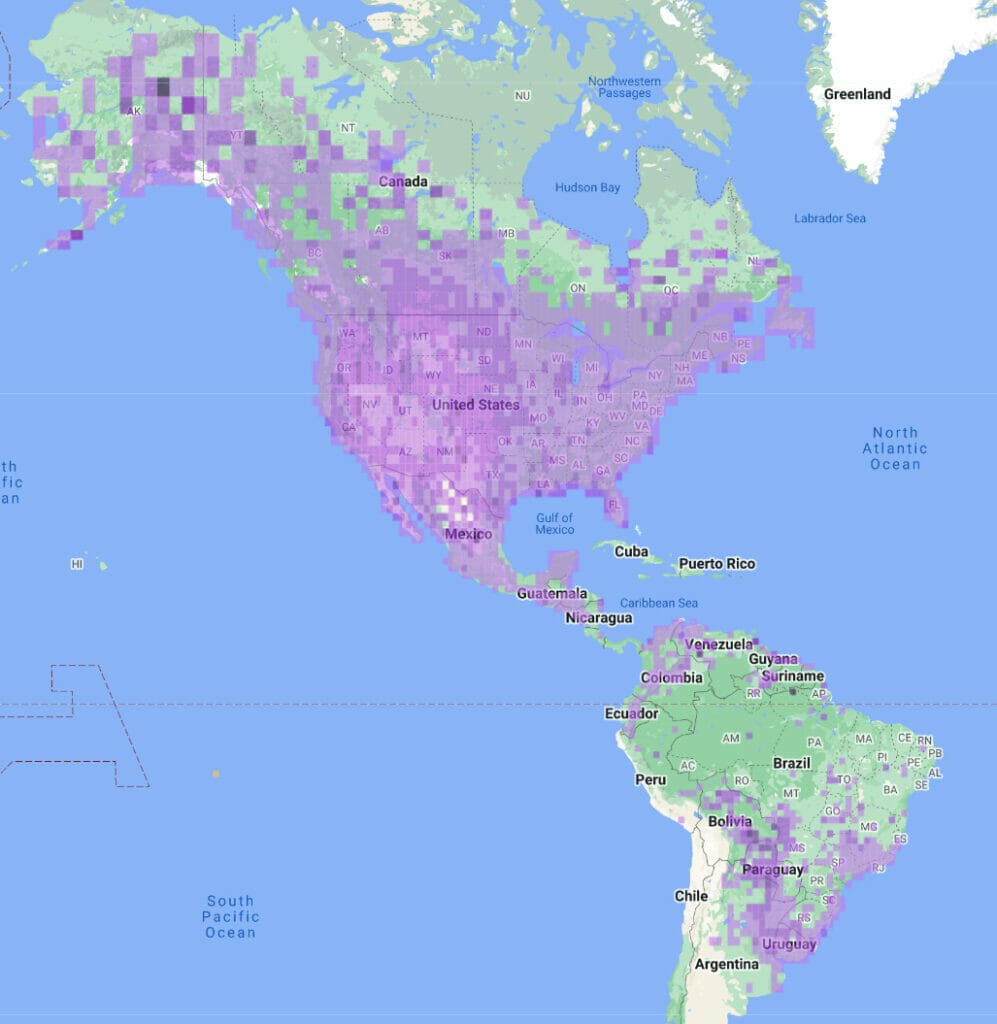
Diet
The Great Horned Owl is largely nocturnal but may hunt in the day at times. It sits on a perch and waits for prey to pounce on. It will take a wide variety of prey, including:
- scorpians
- small rodents
- hares
- waterbirds as big as herons
- other birds
Danger to Humans
Great Horned Owls are very common across the United States so it is inevitable that they will cross paths with humans at times. While that may startle a human, it is reasonable that it does the same to the owl. In which case, it may defend itself. With sharp talons and a bill to match, it has the potential to cause injury.
Peregrine Falcon (Falco peregrinus)
Identification
This is such a distinctive and elegant falcon with a dark gray back which often appears blue. It extends to the head and face which makes it easy to identify in the field. The front is bright white with gray barring.
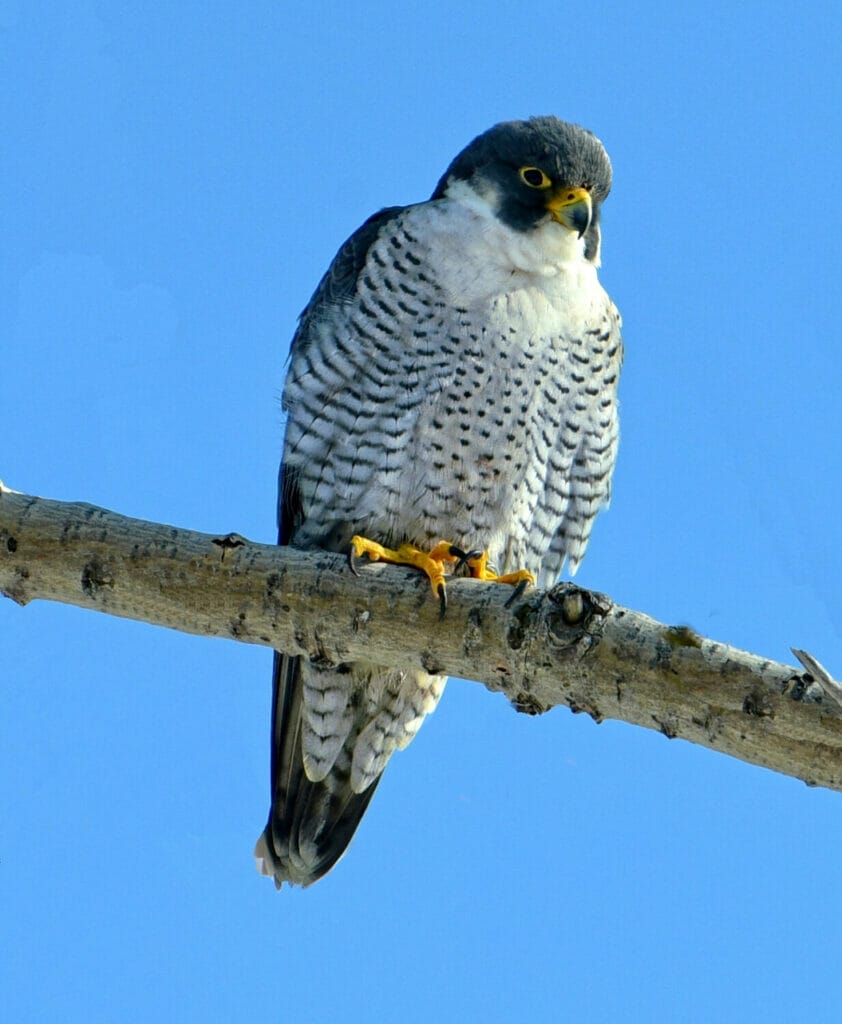
Range
The Peregrine Falcon is found across the globe. The only place it doesn’t reach is New Zealand and the polar caps. This makes it one of the most successful birds of prey in the world.
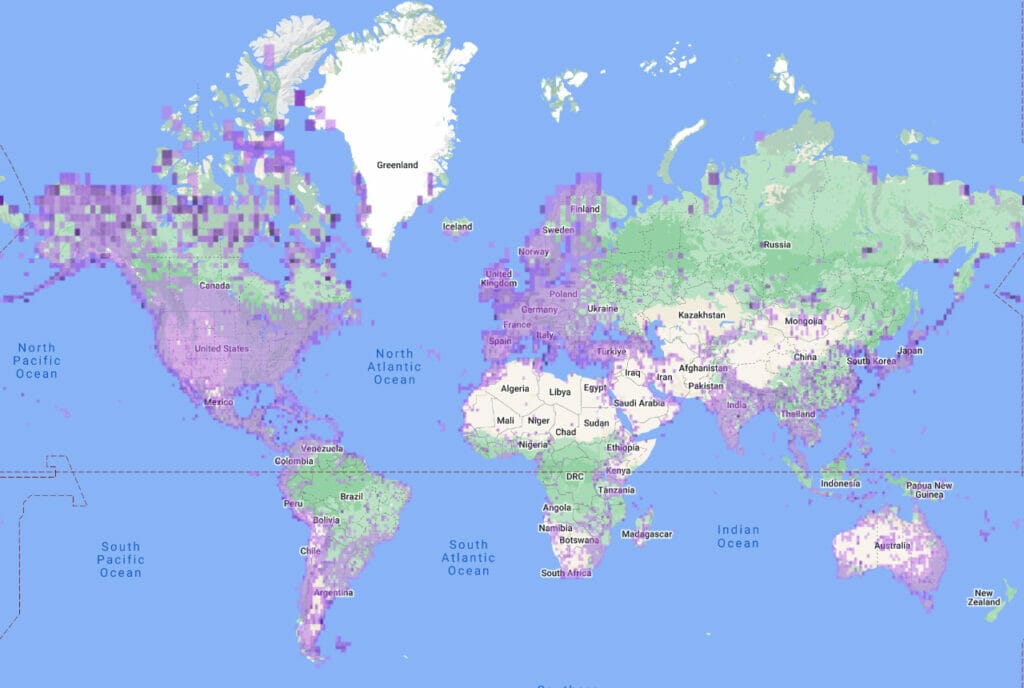
Diet
As such a widespread bird, the Peregrine Falcon is an adaptable hunter but it focuses on taking birds in the air. These may be small songbirds or as large as small geese. Sometimes it will hunt for mammals.
Danger to Humans
There is no doubt that the Peregrine Falcon is an efficient hunter with strength and speed. In fact, when it dives, it can reach to over 200 miles per hour making it the fastest animal in the world. It has no interest in humans.
Bearded Vulture (Gypaetus barbatus)
Identification
This bird of prey is simply stunning. The Bearded Vulture has a huge wingspan and large diamond tail. It is dark above and the body is rufous underneath including the shaggy legs. There are white areas on top and under the wings. The pale head and striped face is distinctive.
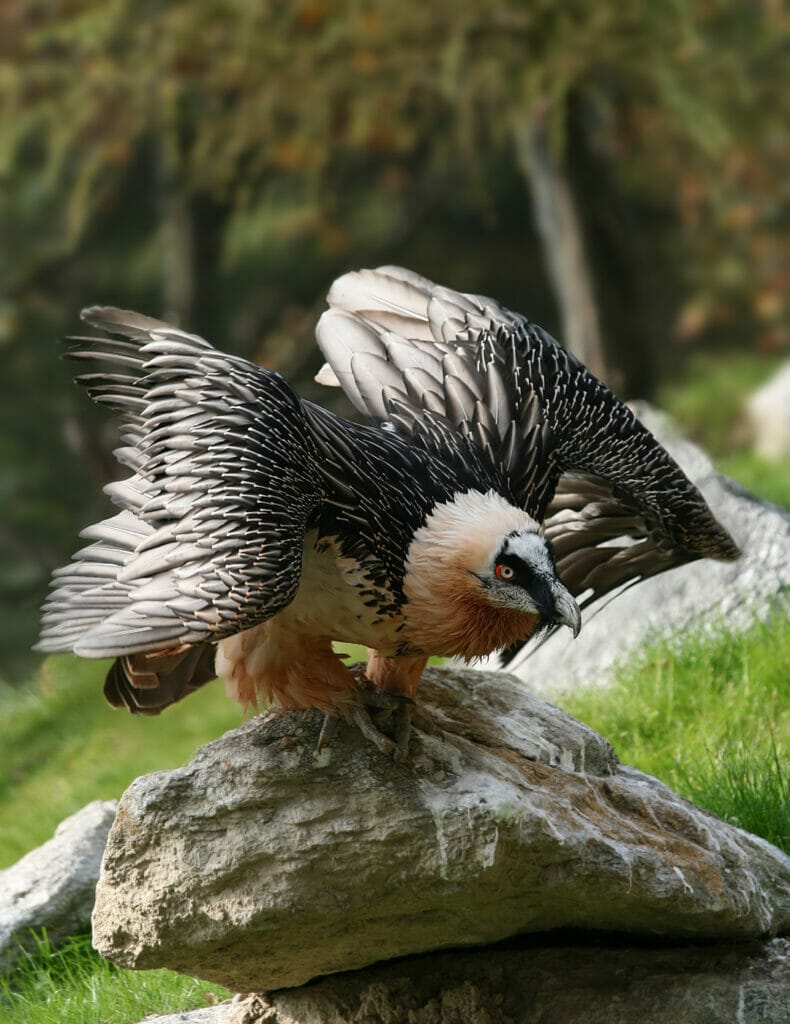
Range
The Bearded Vulture has a huge range from Spain and Morocco in the west to Kenya in the south and China and Mongolia in the west. It inhabits mountain ranges and open areas and although it has a wide hunting range it is not migratory.
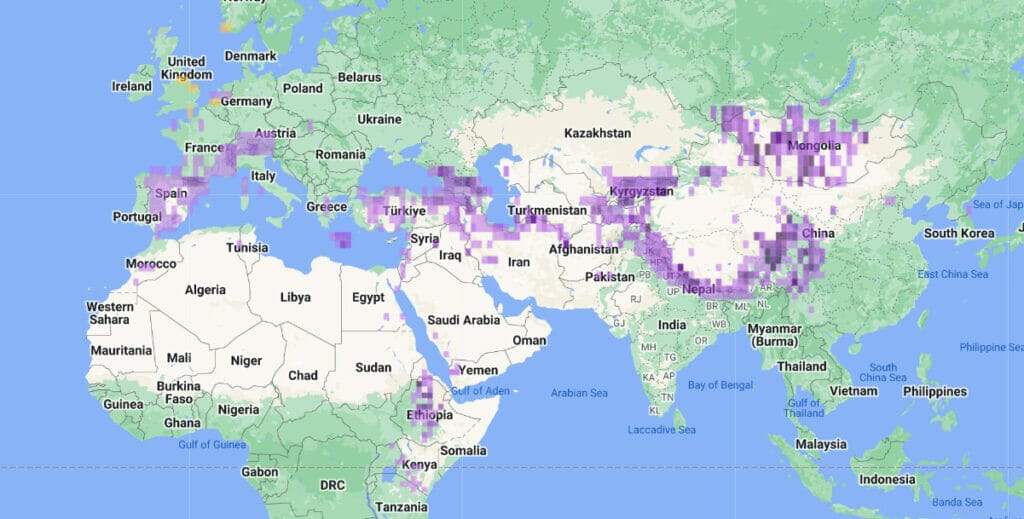
Diet
This unusual bird feeds on bones. It like older bones and will eat them and the marrow within. It swallows smaller bones and breaks larger ones by dropping them from a height. If necessary, it will eat the carcasses of mammals.
Danger to Humans
As a vulture, the Bearded Vulture or Lammergeier eats dead creatures (or in this case bones). It does not hunt and so is not danger to humans.
Secretarybird (Sagittarius serpentarius)
Identification
The Secretarybird is an incredibly unusual bird and you really wouldn’t need a field guide to identify it. The head is turkey like and small with gray plumage and red facial skin. Ragged black feathers stick out the back and down the long neck. The body is pale gray at the top and black at the back. Best of all are the long crane like legs, with black feathers to the knees.
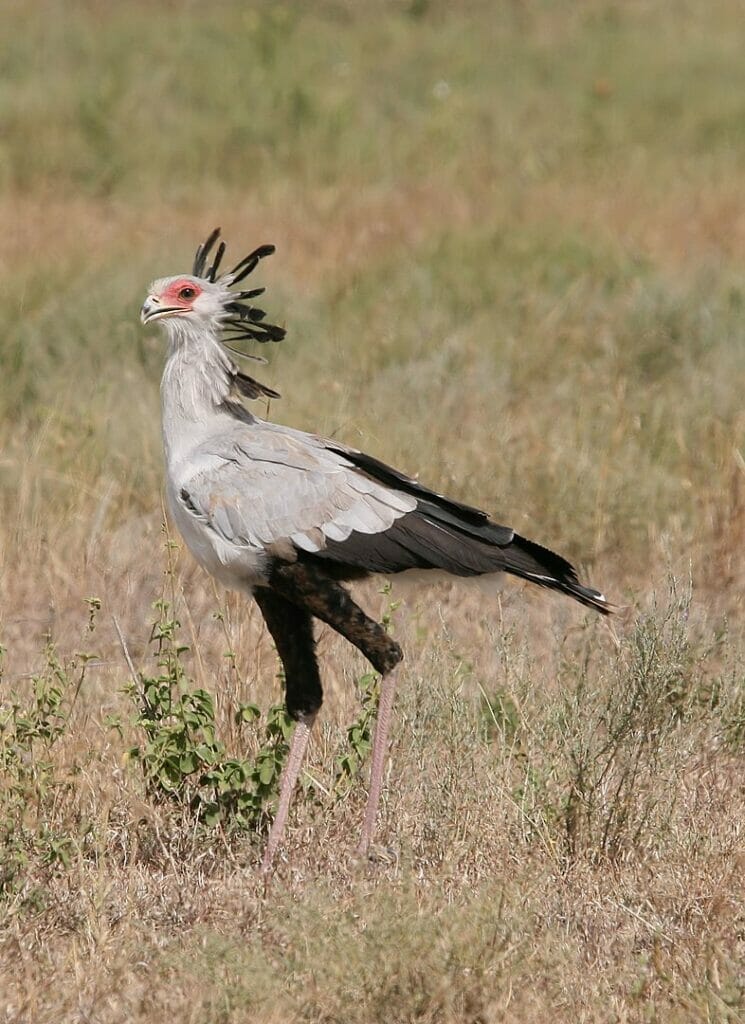
Range
The Secretarybird can be found in isolated pockets in eastern Africa, western Africa and concentrated in southern Africa. It inhabits savannah and open areas where it hunts on the ground.
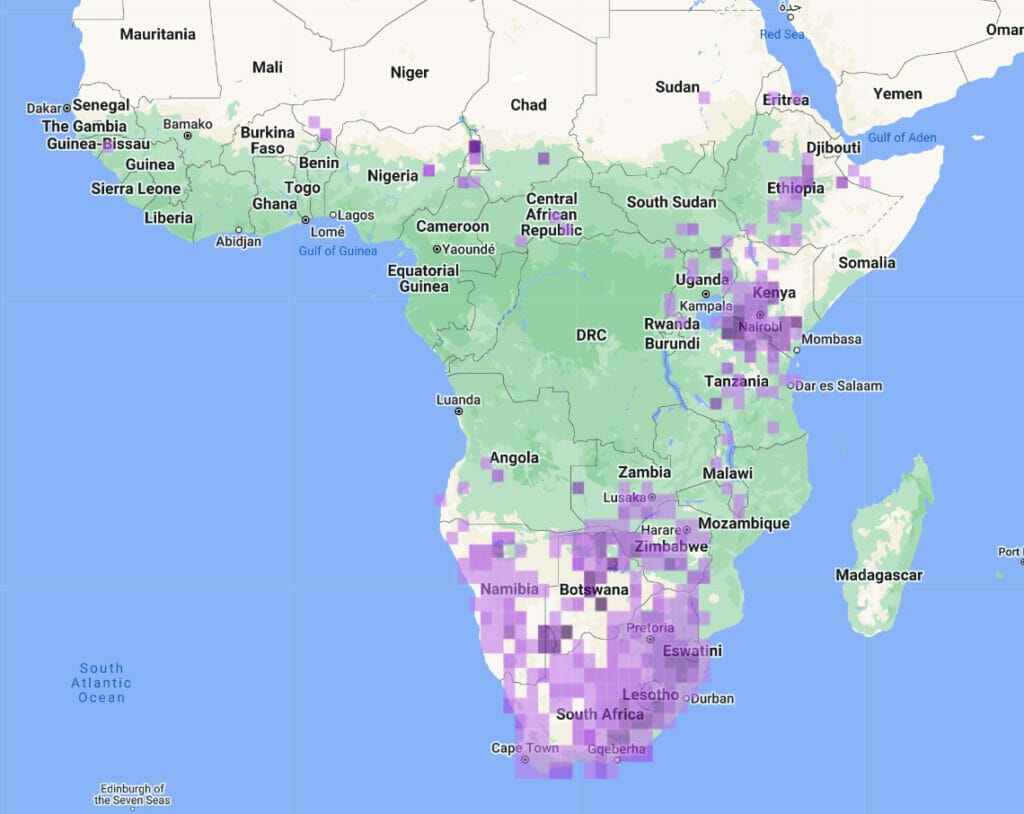
Diet
The Secretarybird hunts for reptiles, birds and small mammals on the ground. It then crushes them with its legs. It will also take insects like large grasshoppers and beetles. They can work together as a family to flush prey into the open or stamp on the ground.
Danger to Humans
Birds of prey need a reason to hurt humans. In this context we are reviewing how and what they hunt. Secretarybirds do not want to eat humans so they are not a danger to us. If threatened they may bite or kick but there are no reports of them inflicting severe injury.
Harpy Eagle (Harpia harpyja)
Identification
This is a very rare eagle with distinctive black and white barring under the wings. The back is dark gray and the head a pale gray. The breast is white and the belly has darker banding across it and the legs.

Range
The Harpy Eagle is only found in mature forests across the southern end of Central America and across northern and central South America.
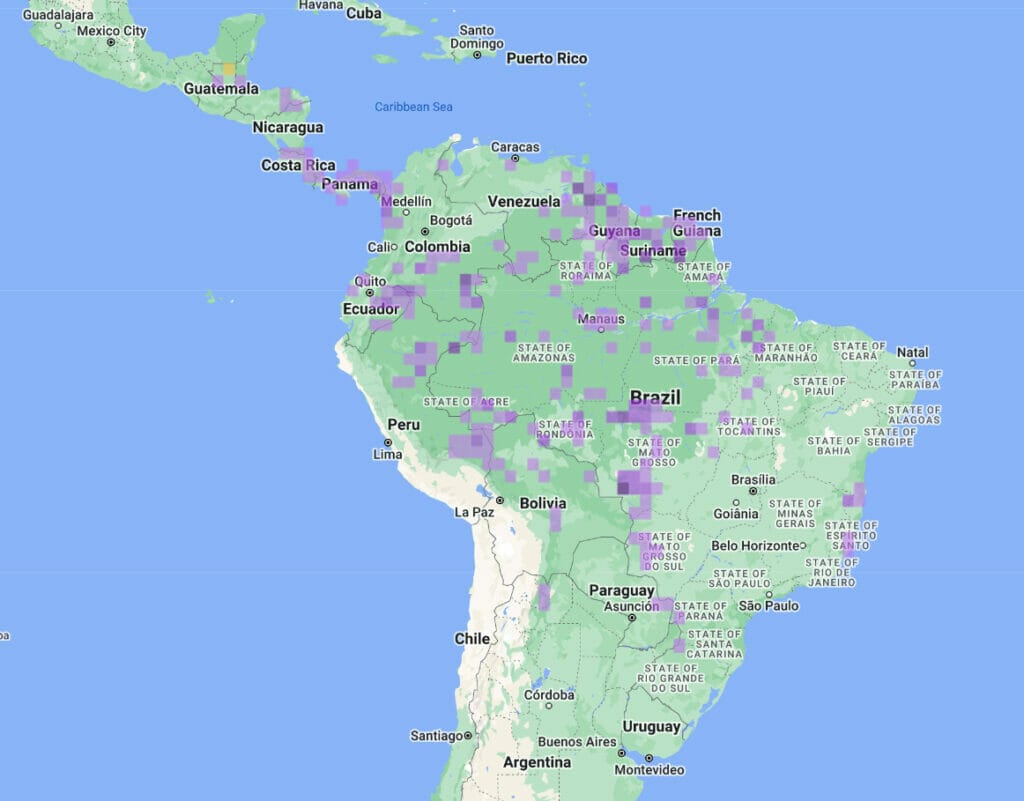
Diet
The Harpy Eagle hunts for a range of animals including:
- small and medium sized monkeys
- pigs
- peccary
- deer
- sloths
- porcupine
- anteater
- olingo
- kinkajou
Danger to Humans
The Harpy Eagle has the largest talons of any eagle on the planet, which means they can take large live animals. They perch in the forest and tend to take tree swelling animals, mostly sloths. As such, they are not likely to be hunting or attacking humans. They are considered in danger of extinction from human interference and trafficking. Hence, they are in more danger from humans than the other way round!
Crowned Eagle (Stephanoaetus coronatus)
Identification
The Crowned Eagle has a very unusual black and white patterned front, almost looking like it has been designed and painted. The back is dark and the tail and under the wings have black and white patches. The head is then a rather plain gray.
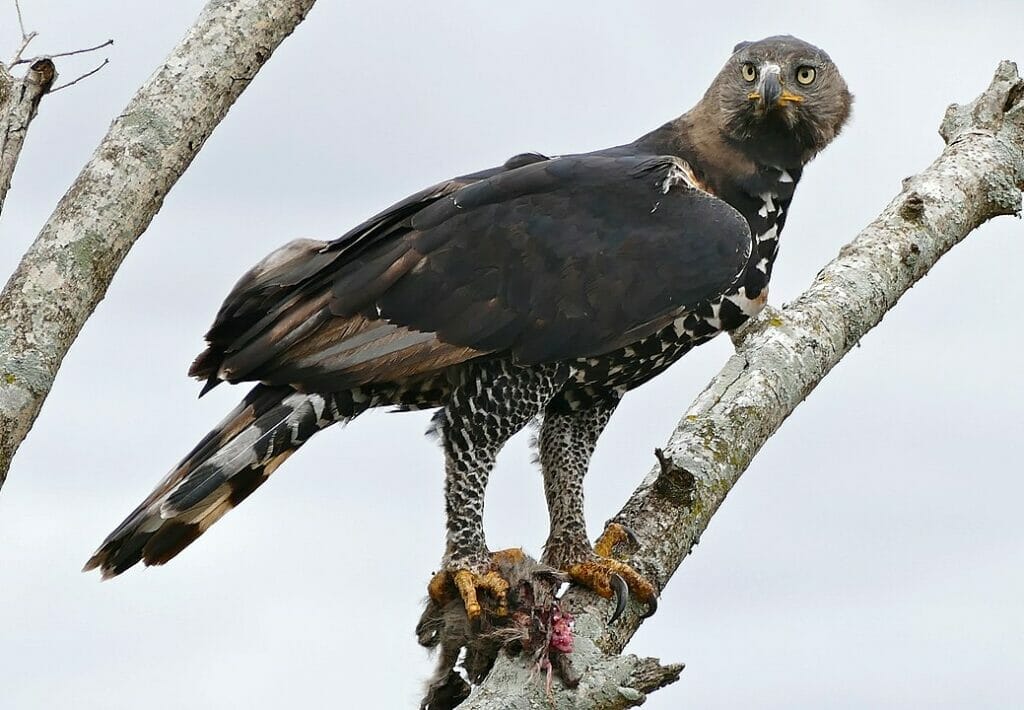
Range
The Crowned Eagle is found across the central and southern parts of Africa. Its range is widespread and it has probably been underreported. It inhabits riparian forests and woodlands.
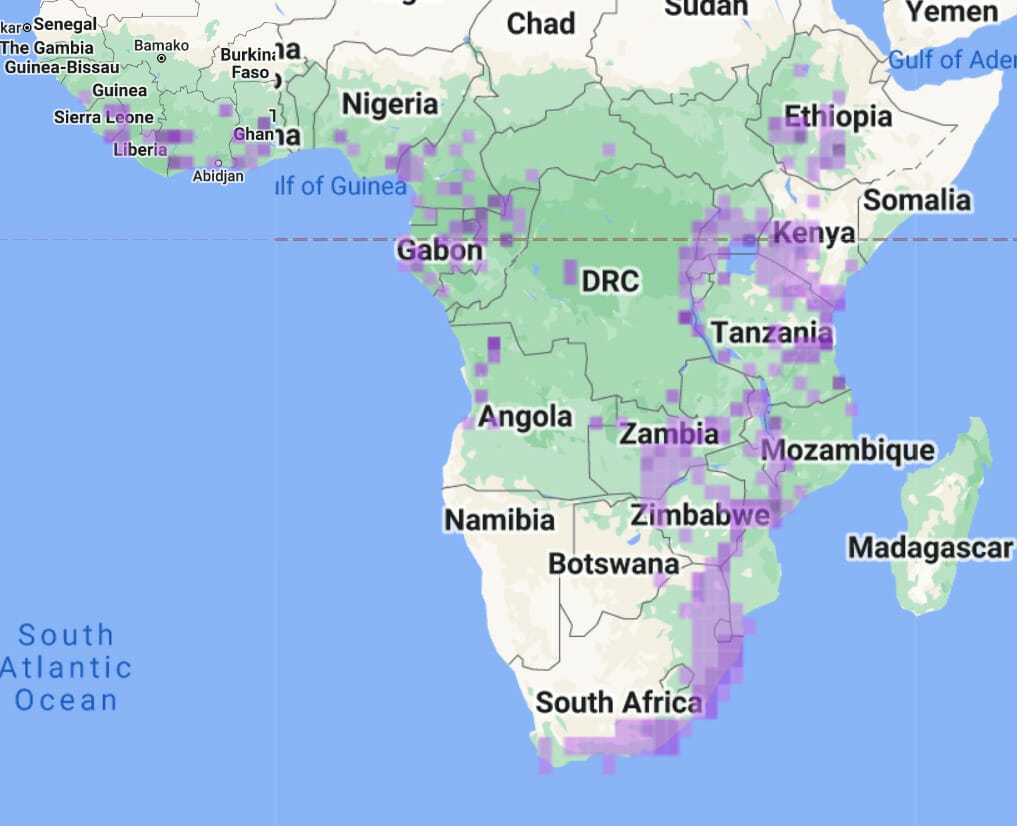
Diet
The Crowned Eagles eats mammals mostly, usually hunting for monkeys. It will also take rodents and small antelopes. It stalks prey and swoops to take it directly or knocks it to the ground first. Mating pairs may hunt together and share the kill. This eagle is capable of taking animals of a greater weight than its own.
Danger to Humans
The Crowned Eagle is not known to be a danger to humans. It will defend its nest and chicks like all birds and with sharp talons and a very strong bill. It is undoubtedly capable of inflicting serious damage to a human but reports suggest that when it has felt threatened it has only caused minor injuries.
Andean Condor (Vultur gryphus)
Identification
The sheer size alone should identify this bird, even at a distance. Close up it is black with white on the back of the wings. A white collar sits around the neck and the head is cover in a mass of folded skin.
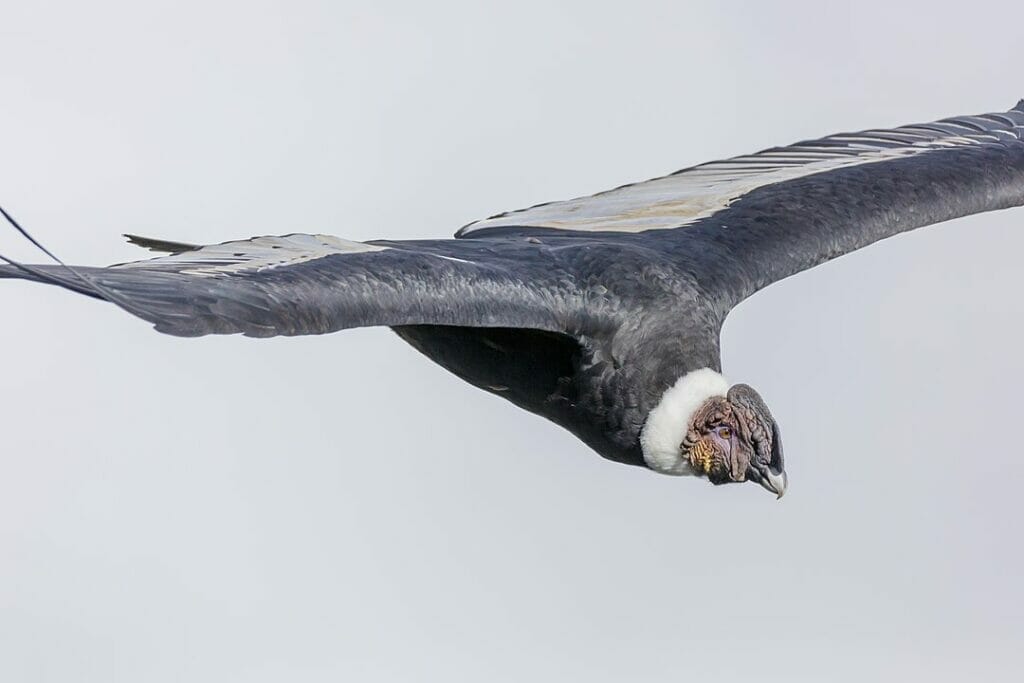
Range
As the name suggests, this bird is resident in the Andes, on the western side of South America. However, it can also be found lower down the slopes and into open areas. It is more common in Chile and Argentina, less common further north. It travels great distances to look for food. Hence, it is not seen over forests.
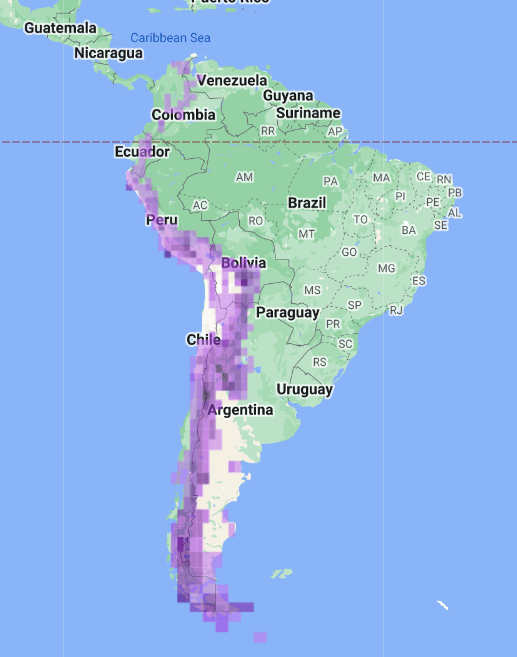
Diet
The Andean Condor feasts on the carrion of large mammals including livestock and marine animals. They actively search for dead animals to eat and will follows mammals like the puma while they hunt and try to scavenge their prey. During the seal breeding season, they will try to pick off the pups or eat the placenta.
Danger to Humans
The bill of the Andean Condor is seriously strong. It is capable of tearing skin, muscle and flesh. Having said that, it is actually a vulture and as such, does not hunt. It scavenges on carcasses of dead animals. Therefore, it is unlikely to hunt to kill prey. Even if it did, humans would be too large.
In fact, in South America the Andean Condor is revered in many cultures and has a place in legends and folklore. It is not considered a danger to humans.
Conclusion
There is no doubt that these large birds of prey should be treated with respect and wariness but articles about their potential danger to humans are not helpful. The only time these birds will hurt humans is when they are provoked, surprised or they feel their nest is threatened. All of which is perfectly reasonable.
These birds should be observed from a distance, have their habitats respected and their nests protected. They are no danger to humans who do this.
FAQ
The most deadly bird in the world is apparently the Southern Cassowary. They have sharp talons and use them to eviscerate whatever is in front of them, including humans. However, they are largely peaceful creatures and do not pose a threat to equally peaceful humans. I have been around lots of Cassowary and it is a surreal and wonderful experience – don’t let anyone tell you otherwise!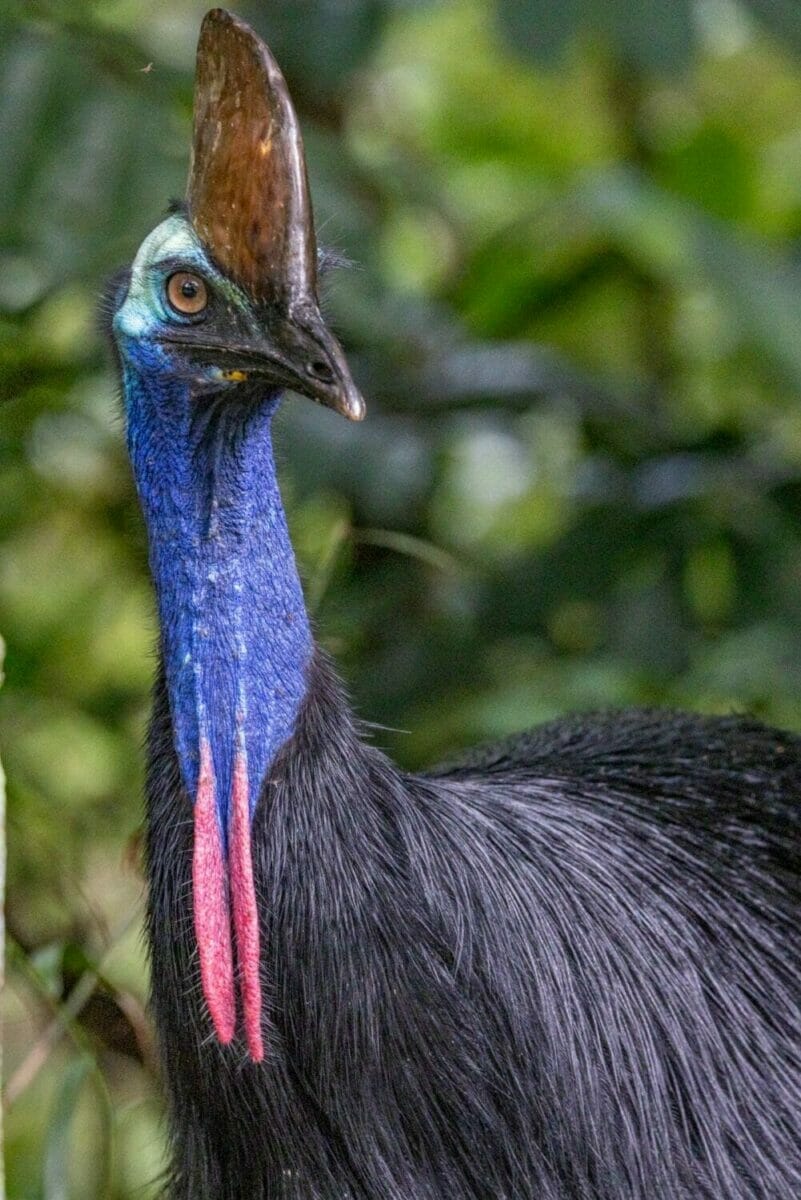
All birds will defend their nests and chicks, whatever their size. You are more likely to be attacked by an angry Mockingbird or Cardinal than any of our birds of prey simply because they (and their nests) are in our backyards.
We have already concluded that all birds can be aggressive if they feel threatened and that is more likely to happen with more common birds. The Great Horned Owl is the bird of prey that humans are most likely to come in contact with so that makes them the most dangerous potentially.
